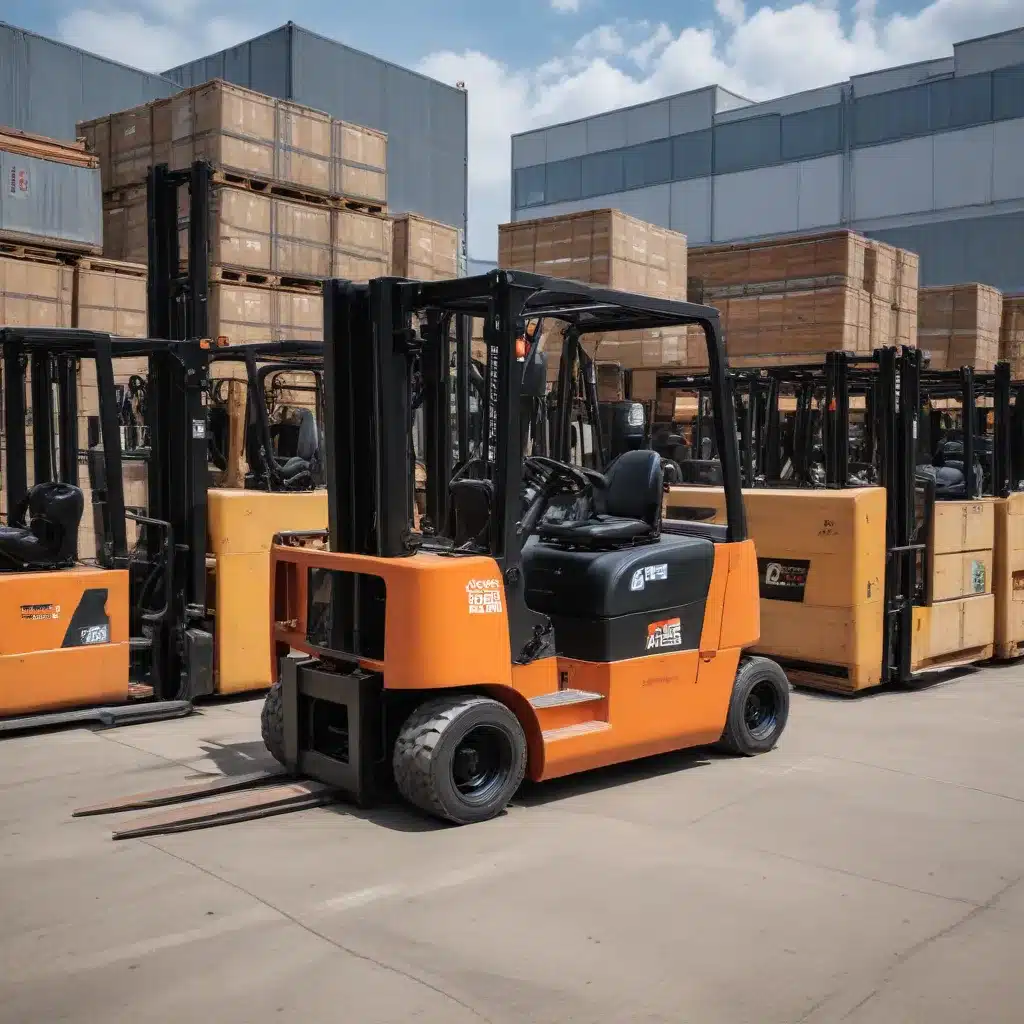
The Imperative for Electrification
The future of the material handling industry is undoubtedly electric. As countries around the world take decisive steps to curb greenhouse gas emissions and promote sustainability, the writing is on the wall for internal combustion (IC) engine forklifts. In fact, by as soon as 2030, certain nations like France, the UK, Germany, and Canada will no longer permit the sale of petrol and diesel-powered vehicles. Even in the United States, states like California are actively evaluating bans on gas-powered equipment.
This impending regulatory landscape has put immense pressure on businesses to transition their forklift fleets to cleaner, more sustainable alternatives. The data speaks for itself – internal combustion forklift purchases have decreased from 77,588 units in 2019 to just 61,161 in 2020, while electric-powered equipment sales have steadily climbed. In 2019, 144,861 electric forklifts were purchased, and even in the pandemic year of 2020, that number remained strong at 135,163 units.
The writing is on the wall – electrification is no longer a nice-to-have, but a must-have for businesses serious about their environmental impact and future-proofing their operations.
Preparing for the Electrification Journey
Transitioning an entire forklift fleet from internal combustion to electric power is a significant undertaking that requires careful planning and strategic execution. Here are the key steps businesses should consider:
1. Choosing the Right Electric Forklift Technology
When it comes to powering your electric forklifts, the two most common battery technologies are lead-acid and lithium-ion. Each option has its unique advantages and trade-offs that must be weighed against your operational requirements and long-term sustainability goals.
Lead-Acid Batteries:
– Lower upfront cost
– Longer history of use in forklifts
– Require dedicated, ventilated charging areas due to off-gassing
Lithium-Ion Batteries:
– Higher energy density for longer runtime
– Faster charging times
– Lighter weight
– No need for ventilated charging areas
– Higher initial investment, but often better long-term ROI
Ultimately, the battery technology you select should be based on a holistic assessment of your material handling needs, facility constraints, and total cost of ownership over the lifetime of the equipment.
2. Optimizing Your Charging Infrastructure
Preparing your facility for electric forklift charging is a critical step in the electrification process. For lead-acid batteries, you’ll need to designate a dedicated, well-ventilated battery charging and changing area to safely accommodate off-gassing. This can be a significant investment in terms of both space and infrastructure upgrades.
Lithium-ion batteries, on the other hand, offer much more flexibility. These batteries can be opportunity charged throughout the facility, eliminating the need for a separate charging room. This not only simplifies your setup but also allows for more efficient workflow and utilization of your forklift fleet.
3. Investing in Operator Training and Maintenance
Regardless of the battery technology you choose, proper operator training and regular forklift maintenance are essential for ensuring safety and maximizing the longevity of your electric equipment. Train your staff on the unique aspects of electric forklift operation, such as:
- Charging and battery care for lead-acid or lithium-ion systems
- Preventive maintenance procedures
- Safely handling and storing the batteries
- Recognizing and responding to potential issues
By prioritizing operator education and proactive maintenance, you can minimize downtime, extend the useful life of your electric forklifts, and maintain optimal productivity in your facility.
Leveraging Sustainability Incentives and Programs
As businesses strive to meet their sustainability commitments and decarbonization goals, many government and utility-sponsored programs are available to support the transition to electric forklifts and other material handling equipment. Depending on your location, you may be able to access:
- Rebates or tax credits to offset the acquisition cost of electric forklifts, chargers, and related infrastructure
- Utility incentives for upgrading electrical systems to accommodate increased power demands
- Grants or low-interest financing options to help fund your electrification efforts
Be sure to work closely with your local forklift dealer to understand the various incentives and programs available in your area. Leveraging these resources can significantly improve the business case for transitioning your fleet to clean, sustainable electric power.
The Benefits of Electrification: A Brighter, Greener Future
The shift to electric forklifts offers a multitude of advantages that extend far beyond just environmental impact. By embracing this technology, businesses can unlock a host of operational and financial benefits:
- Reduced Emissions and Improved Air Quality: Electric forklifts produce zero direct emissions, creating a healthier, more comfortable work environment for your employees.
- Lower Maintenance and Operating Costs: Electric motors require less maintenance than internal combustion engines, and the fuel cost savings can be substantial.
- Increased Productivity and Efficiency: Many electric forklifts boast faster acceleration, higher top speeds, and longer runtime per charge, enhancing productivity on the warehouse floor.
- Quieter Operations: The smooth, silent operation of electric forklifts can help reduce noise pollution and create a more pleasant work atmosphere.
- Improved Safety: With no risk of fuel leaks or open flames, electric forklifts offer inherently safer operation, especially in enclosed spaces.
As businesses and governments around the world continue to prioritize sustainability and emissions reduction, the transition to electric forklifts is no longer optional – it’s a competitive necessity. By taking proactive steps to electrify your material handling fleet, you can position your organization for long-term success, reap the operational benefits, and contribute to a cleaner, greener future.
To learn more about the latest electric forklift technologies and how Forklift Reviews can help guide your electrification journey, be sure to explore our comprehensive resources and expert insights.

